Popular categories
Looking for a yarn?
Order DROPS Buttons

Beech wood No. 503
OrderClicking the ORDER button will redirect you to Wool Warehouse Direct Ltd website
Order DROPS Needles & Hooks
Clicking the ORDER button will redirect you to Wool Warehouse Direct Ltd website
The yarn cost is calculated from the pattern’s smallest size and the yarn’s cheapest product type. Looking for an even better price? You might find it on the DROPS Deals!
Miss Pantsy-Pants
Knitted onesie for children with round yoke in DROPS Merino Extra Fine. The piece is worked top down with Nordic pattern. Sizes 12 months – 6 years.
Change language:
English (US/in)- English (US/in)
- Česky
- Dansk
- Deutsch
- Eesti keel
- English (UK/cm)
- Español
- Français
- Íslenska
- Italiano
- Magyar
- Nederlands
- Norsk
- Polski
- Português
- Suomi
- Svenska
- English (UK/cm), Bulgaria
- English (UK/cm), Croatia
- English (UK/cm), Greece
- English (UK/cm), Latvia
- English (UK/cm), Lithuania
- English (UK/cm), Romania
- English (UK/cm), Slovenia
- Česky, Slovakia
Yarn group B
-----------------------------------------------------------
Sizes: 12/18 months - 2 - 3/4 - 5/6 years
The size is equivalent to approx. height of child in cm:
80/86 - 92 - 98/104 - 110/116
The size is equivalent to approx. height of child in feet:
ft7/2ft9 - 3ft - 3ft3/3ft5 - 3ft3/3ft5
Finished measurements:
Chest measurements: 60-62-64-68 cm = 23⅝"-24⅜"-25¼"-26¾"
Full length: 71-79-93-103 cm = 28"-31"-36⅝"-40½"
All measurements in charts are in cm.
Materials:
DROPS MERINO EXTRA FINE from Garnstudio (belongs to yarn group B)
300-350-400-450 g color 11, red
50-50-100-100 g color 08, light beige
50-50-50-50 g color 01, off white
-------------------------------------------------------
ACCESSORIES FOR THE PIECE:
KNITTING GAUGE:
21 stitches in width and 28 rows in height with stockinette stitch = 10 x 10 cm = 4" x 4".
NEEDLES:
DROPS DOUBLE POINTED NEEDLES SIZE 4 MM = US 6 – for stockinette stitch on sleeves.
DROPS CIRCULAR NEEDLE SIZE 4 MM = US 6: length 40 cm = 16" and 60 cm = 24" or 80 cm = 32" for stockinette stitch.
DROPS DOUBLE POINTED NEEDLES SIZE 3 MM = US 2.5 – for rib on sleeves.
DROPS CIRCULAR NEEDLE SIZE 3 MM = US 2.5: length 60 cm = 24" or 80 cm = 32" for rib.
The needle size is only a guide. If you have too many stitches on 10 cm = 4", change to a larger needle size. If you have too few stitches on 10 cm = 4", change to a smaller needle size.
DROPS WOOD BUTTONS, Oak NO 503: 6-6-7-7 items.
-------------------------------------------------------
Alternative Yarn – See how to change yarns here
Yarn Groups A to F – Use the same pattern and change the yarn here
Yarn usage using an alternative yarn – Use our yarn converter here
-------------------------------------------------------
You might also like...
Order DROPS Buttons

Beech wood No. 503
OrderClicking the ORDER button will redirect you to Wool Warehouse Direct Ltd website
Order DROPS Needles & Hooks
Clicking the ORDER button will redirect you to Wool Warehouse Direct Ltd website
The yarn cost is calculated from the pattern’s smallest size and the yarn’s cheapest product type. Looking for an even better price? You might find it on the DROPS Deals!
Pattern instructions
EXPLANATIONS FOR THE PATTERN:
-------------------------------------------------------
RIDGE/GARTER STITCH (worked back and forth):
1 ridge = Knit 2 rows.
PATTERN:
See diagrams A.1 and A.2. Choose diagram for your size. The whole pattern is worked in stockinette stitch.
DECREASE/INCREASE TIP:
To work out when to decrease/increase evenly, count the total number of stitches on the needle (e.g. 76 stitches) and divide by the number of decreases/increases to be made (e.g. 7) = 10.8. In this example, decrease by working together approx. each 10th and 11th stitch, or increase after approx. each 11th stitch by making 1 yarn over (the yarn overs are worked twisted on the next row to avoid holes).
INCREASE TIP (for sides of body):
Increase 1 stitch on each side of the marker thread as follows: Start 2 stitches before the marker thread, make 1 yarn over, knit 4 (marker thread sits in the middle of these 4 stitches), make 1 yarn over (= 2 stitches increased). On the next row work the yarn overs twisted to avoid holes.
DECREASE TIP (for mid under sleeve and inside of leg):
Decrease 1 stitch on each side of the marker thread as follows: Start 3 stitches before the marker thread, knit 2 together, knit 2 (marker thread sits between these 2 stitches), slip 1 stitch as if to knit, knit 1 and pass the slipped stitch over the knitted stitch (= 2 stitches decreased).
-------------------------------------------------------
START THE PIECE HERE:
-------------------------------------------------------
ONESIE - SHORT OVERVIEW OF THE PIECE:
The piece is worked back and forth with circular needle from mid front. To make measuring the length of the sleeves and legs easier, the onesie is worked top down. The bands are worked to finish.
NECK:
Cast on 76-80-84-88 stitches (including 1 edge stitch in each side of the piece) with circular needle size 3 MM = US 2.5 and red. Purl 1 row from the wrong side with1 edge stitch in GARTER STITCH – read description above, in each side of the piece. Change to light beige.
The next row is worked as follows from the right side: 1 edge stitch in garter stitch, * knit 2, purl 2 *, work from *-* until there are 3 stitches left and finish with knit 2 and 1 edge stitch in garter stitch. Continue this rib for 3 cm = 1⅛", finish after a row from the right side.
YOKE:
Change to circular needle size 4 MM = US 6. The edge stitches are worked in garter stitch to finished length. Purl 1 row from the wrong side with 1 edge stitch in garter stitch in each side and decrease 7-5-4-1 stitches evenly on this row – read DECREASE/INCREASE TIP (purl 2 stitches together = 1 stitch decreased) = 69-75-80-87 stitches. Then work an elevation in back of neck in stockinette stitch as follows (to give the garment a better fit):
Knit until there are 12-13-14-15 stitches left on row, turn, tighten strand and purl until there are 12-13-14-15 stitches left on other side. Turn, tighten strand and knit until there are 20-22-24-26 stitches left, turn, tighten strand and purl until there are 20-22-24-26 stitches left on other side. Turn, tighten strand and knit until there are 28-31-34-37 stitches left on row, turn, tighten strand and purl until there are 28-31-34-37 stitches left on other side. Turn, tighten strand and knit to end of row, then purl 1 row from the wrong side (edge stitches worked in garter stitch). The next row is worked as follows from the right side: 1 edge stitch in garter stitch, work pattern according to A.1 until there are 2 stitches left on row – NOTE: Choose diagram for your size (= 11-12-11-12 repeats of 6-6-7-7 stitches), work A.2 (= 1 stitch) and finish with 1 edge stitch in garter stitch.
Continue this pattern and increase as shown in diagram – REMEMBER THE KNITTING GAUGE! When A.1 and A.2 have been completed, there are 179-195-212-231 stitches on the needle. Continue with stockinette stitch and 1 edge stitch in garter stitch in each side with red.
On the next row from the right side increase 7-7-10-7 stitches evenly on row = 186-202-222-238 stitches.
Work until the piece measures approx. 13-14-15-16 cm = 5⅛"-5½"-6"-6¼" mid front (measured without the neck).
Now divide the piece as follows: Work 25-27-30-32 stitches as before (= front piece), place the next 42-46-50-54 stitches on 1 thread for sleeve (without working them), cast on 6 new stitches on the needle, work 52-56-62-66 stitches (= back piece), place the next 42-46-50-54 stitches on 1 thread for sleeve (without working them), cast on 6 new stitches on the needle and work the remaining 25-27-30-32 stitches as before (= front piece) = 114-122-134-142 stitches.
BODY:
Insert 1 marker thread 28-30-33-35 stitches in from each side (= 58-62-68-72 stitches between marker threads on back piece). THE PIECE IS NOW MEASURED FROM HERE! Continue back and forth with stockinette stitch and 1 edge stitch in garter stitch in each side towards mid front. When the piece measures 10-10-12-12 cm = 4"-4"-4¾"-4¾" from where body and sleeves were divided, increase 1 stitch on each side of both marker threads – read INCREASE TIP (= 4 stitches increased). Repeat this increase when the piece measures 20-20-24-24 cm = 8"-8"-9½"-9½" from where body and sleeves were divided = 122-130-142-150 stitches. When the piece measures 29-31-35-38 cm = 11⅜"-12¼"-13¾"-15" from where body and sleeves were divided, stop working the edge stitches in garter stitch mid front. Cast on 1 stitch at the end of the next 2 rows = 124-132-144-152 stitches. Then work stockinette stitch in the round over all stitches for approx. 3 cm = 1⅛" – the piece now measures 32-34-38-41 cm = 12½"-13⅜"-15"-16⅛" from the armhole and 45-48-53-57 cm = 17¾"-19"-21"-22½" from mid front (measured without neck). Now divide for the legs.
LEG:
Start mid front, change to double pointed needles size 4 MM = US 6 and work stockinette stitch in the round over the first 62-66-72-76 stitches (the remaining 62-66-72-76 stitches are left on the circular needle). Insert 1 marker thread at the beginning of the round (= inside of leg). When the leg measures 2 cm = ¾" from the division, decrease 2 stitches on the inside of the leg – read DECREASE TIP. Decrease like this every 3rd-4th-6th-7th round a total of 10-10-11-11 times = 42-46-50-54 stitches. When the leg measures 13-18-25-31 cm = 5⅛"-7"-9¾"-12¼" from the division increase 10 stitches evenly on round = 52-56-60-64 stitches. Change to double pointed needles size 3 MM = US 2.5 and work rib in the round (= knit 2 / purl 2) for 8-8-10-10 cm = 3⅛"-3⅛"-4"-4" or to desired length. On the next round increase all purl 2 to purl 3 = 65-70-75-80 stitches. Then bind off with knit over knit and purl over purl.
Place stitches from the circular needle onto double pointed needles size 4 MM = US 6 and work the other leg in the same way. The whole piece measures approx. 71-79-93-103 cm = 28"-31"-36⅝"-40½", measured from the shoulder down.
SLEEVE:
Place stitches from the thread on the one side of the piece on double pointed needles size 4 MM = US 6 and knit up 1 stitch in each of the 6 stitches cast on under the sleeve = 48-52-56-60 stitches. Insert 1 marker thread in the middle of these 6 stitches = mid under sleeve). THE PIECE IS NOW MEASURED FROM HERE! Work stockinette stitch in the round with red. When the sleeve measures 2-2-1-1 cm = ¾"-¾"-⅜"-⅜" from where the sleeve was divided from the body, decrease 2 stitches mid under sleeve – remember DECREASE TIP. Decrease like this every 3rd-3rd-4th-4th round a total of 7-9-10-12 times = 34-34-36-36 stitches. When the sleeve measures 10-12-15-18 cm = 4"-4¾"-6"-7" from where it was divided from the body, increase 6-6-8-8 stitches evenly on round = 40-40-44-44 stitches. Change to double pointed needles size 3 MM = US 2.5 and work rib in the round (= knit 2 / purl 2) for 8-8-10-10 cm = 3⅛"-3⅛"-4"-4" or to desired length. On the next round increase all purl 2 to purl 3 = 50-50-55-55 stitches. Then bind off with knit over knit and purl over purl.
Work the other sleeve in the same way.
LEFT BAND:
Knit up approx. 114-148 stitches with circular needle size 3 MM = US 2.5, inside the 1 edge stitch from the right side (the number of stitches should be divisible by 2), start at top of neck. Make sure the band is not tight. Work rib (= knit 2 / purl 2). Make sure the 2 stitches at top of neck are knitted. Work until the band measures approx. 2 cm = ¾". Bind off with knit over knit and purl over purl.
RIGHT BAND:
Work as for left band, but when the band measures 1 cm work 6-6-7-7 buttonholes evenly spaced on band (buttonholes are worked in purl sections seen from the right side). 1 buttonhole = purl 2 together and make 1 yarn over – the first buttonhole is worked approx. 1½-2 cm = ½"-¾" from the neckline, then work the next 5-5-6-6 buttonholes with approx. 7½-8-7½-8 cm = 2⅞"-3⅛"-2⅞"-3⅛" between each one.
ASSEMBLY:
Lay right band over left band and sew down to the onesie where you cast on 1 stitch in each side, sew with small neat stitches. Sew buttons onto left band.
This pattern has been corrected. Click here to see the correction/s.
New yarn amount in color 08, light beige: DROPS MERINO EXTRA FINE from Garnstudio 50-50-100-100 g color 08, light beige
Diagram
All measurements in charts are in cm.

|
= red |

|
= light beige |

|
= off white |

|
= between 2 stitches make 1 yarn over with background colour in pattern stripe; on next row work yarn over twisted to avoid a hole |



What can you do with our patterns? You can share DROPS patterns online, using the pattern original picture, materials, name and number. But you are NOT ALLOWED to reproduce the complete pattern digitally in any way. Yarn stores are welcome to use the DROPS pattern database to promote the sale of our assortment. You can print out our patterns, make as many copies as you’d like. The only thing we ask is that you don't make any changes / additions to the original printed document. And that the patterns according to the DROPS philosophy are given out to the consumers for free. Editorials that wish to publish our patterns in printed books or magazines can contact us for more information. The sale of garments based on DROPS patterns is permitted as long as they are sold as single items or per order. Further commercial use of the patterns is not permitted. It has to be clearly stated that the garment is made based on a design from DROPS DESIGN. The use of clothing labels of which DROPS DESIGN forms part is conditioned by the inclusion of the following text: “A DROPS DESIGN made by …..”. The use of DROPS photos for marketing purposes/sales is only permitted in connection with the use/sale of DROPS products. The photos may not be cut or edited and the logo should be clearly visible.
We reserve the right to withdraw the permission for use of our patterns at any time, notwithstanding the reason.
Each of our patterns has specific tutorial videos to help you.
These step-by-step tutorials might also help you:
Why is the knitting/crochet tension so important?
Knitting tension is what determines the final measurements of your work, and is usually measured per 10 x 10 cm. It is provided like so: number of stitches in width x number of rows in height - eg: 19 stitches x 26 rows = 10 x 10 cm.
The knitting tension is very individual; some people knit/crochet loosely while others work tightly. You adjust the knitting tension with the needle size, which is why the suggested needle size only serve as a guide! You need to adjust this (up or down) to ensure that YOUR knitting tension matches the knitting tension provided in the pattern. If you work with a different knitting tension than provided you will have a different yarn consumption, and your work will have different measurements than what the pattern suggests.
The knitting tension also determines which yarns can replace each other. As long as you achieve the same knitting tension you can replace one yarn with another.
See DROPS lesson: How to measure your tension/gauge
See DROPS video: How to make a gauge tension swatch
How do I know how many balls of yarn I need?
The required amount of yarn is provided in grams, eg: 450 g. To calculate how many balls you’ll need you first need to know how many grams are in 1 ball (25g, 50g or 100g). This information is available if you click on the individual yarn quality on our pages. Divide the amount required with the amount of each ball. For example, if each ball is 50g (the most common amount), the calculation will be as follows: 450 / 50 = 9 balls.
Can I use a different yarn than what the pattern suggests?
The important thing when changing from one yarn to another is that the knitting/crochet tension remains the same. This is so that the measurements of the finished piece will be the same as on the sketch provided. It is easier to achieve the same knitting tension using yarns from the same yarn group. It is also possible to work with multiple strands of a thinner yarn to achieve the knitting tension of a thicker one. Please try our yarn converter. We recommend you to always work a test swatch.
Please NOTE: when changing yarn the garment might have a different look and feel to the garment in the photo, due to individual properties and qualities of each yarn.
See DROPS lesson: Can I use a different yarn than the one mentioned in the pattern?
What are the yarn groups?
All our yarns are categorised into yarn groups (from A to F) according to thickness and knitting tension – group A contains the thinnest yarns and group F the thickest. This makes it easier for you to find alternative yarns to our patterns, should you wish to switch yarn. All yarns within the same group have a similar knitting tension and can easily replace each other. However, different yarn qualities have different structures and properties which will give the finished work a unique look and feel.
How do I use the yarn converter?
At the top of all our patterns you’ll find a link to our yarn converter, which is a helpful tool should you wish to use a different yarn than suggested. By filling in the yarn quality you wish to replace, the amount (in your size) and number of strands, the converter will present good alternative yarns with the same knitting tension. Additionally it will tell you how much you’ll require in the new qualities and whether you’ll need to work with multiple strands. Most skeins are 50g (some are 25g or 100g).
If the pattern is worked with multiple colours, every colour will have to be converted separately. Similarly, if the pattern is worked with several strands of different yarns (for example 1 strand Alpaca and 1 strand Kid-Silk) you will have to find alternatives for each, individually.
Why do you show discontinued yarns in the patterns?
Since different yarns have different qualities and textures we have chosen to keep the original yarn in our patterns. However, you can easily find options among our available qualities by using our yarn converter, or simply pick a yarn from the same yarn group.
It is possible that some retailers still have discontinued yarns in stock, or that someone has a few skeins at home that they would like to find patterns for.
The yarn converter will provide both alternative yarn as well as required amount in the new quality.
What size should I knit?
If you think it's hard to decide what size to make, it can be a good idea to measure a garment you own already and like the size of. Then you can pick the size by comparing those measures with the ones available in the pattern's size chart.
You'll find the size chart at the bottom of the pattern.
See DROPS lesson: How to read size chart
Why do I get the wrong knitting tension with the suggested needle size?
The needle size provided in the pattern serves only as a guide, the important thing is to follow the knitting tension. And since knitting tension is very individual, you will have to adjust the needle size to ensure that YOUR tension is the same as in the pattern – maybe you’ll have to adjust 1, or even 2 needle sizes, up or down to achieve the correct tension. For this, we recommend that you work test swatches.
Should you work with a different knitting tension than the one provided, the measurements of the finished garment might deviate from the measurement sketch.
See DROPS lesson: How to measure your tension/gauge
See DROPS video: How to make a gauge tension swatch
Why is the pattern worked top-down?
Working a garment top-down provides more flexibility and room for personal adjustment. For example it is easier to try the garment on while working, as well as making adjustments to length of yoke and shoulder caps.
The instructions are carefully explaining every step, in the correct order. Diagrams are adjusted to the knitting direction and are worked as usual.
How do I work according to a knitting diagram?
The diagram depicts all rows/rounds, and every stitch seen from the right side. It is read from bottom to top, from right to left. 1 square = 1 stitch.
When working back and forth, every other row is worked from the right side and every other row is worked from the wrong side. When working from the wrong side, the diagram will have to be worked reversed: from left to right, knit stitches are purled, purl stitches are knit etc.
When working in the round every round is worked from the right side and the diagram are worked from right to left on all rounds.
See DROPS lesson: How to read knitting diagrams
How do I work according to a crochet diagram?
The diagram depicts all rows/rounds, and every stitch seen from the right side. It is worked from bottom to top, from right to left.
When working back and forth every other row is worked from the right side: from right to left and every other row is worked from the wrong side: from left to right.
When working in the round, every row in the diagram are worked from the right side, from right to left.
When working a circular diagram you start in the middle and work your way outwards, counter clockwise, row by row.
The rows usually start with a given number of chain stitches (equivalent to the height of the following stitch), this will either be depicted in the diagram or explained in the pattern.
See DROPS lesson: How to read crochet diagrams
How do I work several diagrams simultaneously on the same row/round?
Instructions for working several diagrams after each other on the same row/round, will often be written like so: “work A.1, A.2, A.3 a total of 0-0-2-3-4 times". This means you work A.1 once, then A.2 is worked once, and A.3 is repeated (in width) the number of times provided for your size – in this case like so: S = 0 times, M = 0 times, L=2 times, XL= 3 times and XXL = 4 times.
The diagrams are worked as usual: begin with the first row in A.1, then work the first row in A.2 etc.
See DROPS lesson: How to read knitting diagrams
See DROPS lesson: How to read crochet diagrams
Why are the sleeves shorter in larger sizes?
The total width of the garment (from wrist-to-wrist) will be larger in the larger sizes, despite the actual sleeves being shorter. The larger sizes have longer sleeve caps and wider shoulders, so there will be a good fit in all sizes.
Where on the garment is the length measured?
The measurement sketch/schematic drawing provides information regarding the full length of the garment. If it’s a jumper or a jacket the length is measured from the highest point on the shoulder (usually closest to the neckline), and straight down to the bottom of the garment. It is NOT measured from the tip of shoulder. Similarly, the length of yoke is measured from the highest point on the shoulder and down to where yoke is split into body and sleeves.
See DROPS lesson: How to read a schematic drawing
What is a repeat?
Diagrams are often repeated on the round or in height. 1 repeat is the diagram the way it appears in the pattern. If it says to work 5 repeats of A.1 in the round, then you work A.1 a total of 5 times after/next to each other in the round. If it says to work 2 repeats of A.1 vertically/in height you work the entire diagram once, then begin again at the start and work the entire diagram one more time.
Why does the piece start with more chain stitches than it’s worked with?
Chain stitches are slightly narrower than other stitches and to avoid working the cast-on edge too tight, we simply chain more stitches to begin with. The stitch count will be adjusted on the following row to fit the pattern and measurement sketch.
Why increase before the rib edge when the piece is worked top-down?
The rib edge is more elastic and will contract slightly compared to, for example, stocking stitch. By increasing before the rib edge, you avoid a visible difference in width between the rib edge and the rest of the body.
Why increase in the cast-off edge?
It’s very easy to cast off too tightly, and by making yarn overs while casting off (and simultaneously casting these off) you avoid a too tight cast off edge.
See DROPS video: How to bind off with yarn overs (yo)
How do I increase/decrease on every 3rd and 4th row/round alternately?
To achieve an even increase (or decrease) you can increase on, for example: every 3rd and 4th row alternately, like so: work 2 rows and increase on the 3rd row, work 3 rows and increase on the 4th. Repeat this until the increase is complete.
See DROPS lesson: Increase or decrease 1 st on every 3rd and 4th row alternately
How can I work a jacket in the round instead of back and forth?
Should you prefer to work in the round instead of back and forth, you may of course adjust the pattern. You’ll need to add steeks mid-front (usually 5 stitches), and follow the instructions. When you would normally turn and work from the wrong side, simply work across the steek and continue in the round. At the end you’ll cut the piece open, pick up stitches to work bands, and cover the cut edges.
See DROPS video: How to knit steeks and cut open
Can I work a jumper back and forth instead of in the round?
Should you prefer to work back and forth instead of in the round, you may of course adjust the pattern so you work the pieces separately and then assemble them at the end. Divide the stitches for the body in 2, add 1 edge stitch in each side (for sewing) and work the front and back pieces separately.
See DROPS lesson: Can I adapt a pattern for circular needles into straight needles?
Why is the pattern slightly different than what I see in the photo?
Pattern repeats can vary slightly in the different sizes, in order to get the correct proportions. If you’re not working the exact same size as the garment in the photo, yours might deviate slightly. This has been carefully developed and adjusted so that the complete impression of the garment is the same in all sizes.
Make sure to follow instructions and diagrams for your size!
How do I make a women’s size garment into a men’s size one?
If you have found a pattern you like which is available in women’s size it’s not very difficult to convert it to men’s size. The biggest difference will be the length of sleeves and body. Start working on the women size that you think would fit across the chest. The additional length will be worked right before you cast off for the armhole/sleeve cap. If the pattern is worked top-down you can add the length right after the armhole or before the first decrease on sleeve.
Regarding additional yarn amount, this will depend on how much length you add, but it is better with a skein too many than too few.
How do I prevent a hairy garment from shedding?
All yarns will have excess fibres (from production) that might come off as lint or shedding. Brushed yarns (ie hairier yarns) have more of these loose, excess fibres, causing more shedding.
Shedding also depends on what is worn under or over the garment, and whether this pulls at the yarn fibres. It’s therefore not possible to guarantee that there will be no shedding
Below are some tips on how to get the best result when working with hairier yarns:
1. When the garment is finished (before you wash it) shake it vigorously so the looser hairs come off. NOTE: do NOT use a lint roller, brush or any method that pulls at the yarn.
2. Place the garment in a plastic bag and put it in your freezer - the temperature will cause the fibres to become less attached to each other, and excess fibres will come off easier.
3. Leave in the freezer for a few hours before taking it out and shaking it again.
4. Wash the garment according to the instructions on the yarn label.
Why does my garment pill?
Pilling is a natural process that happens to even the most exclusive of fibers. It's a natural sign of wear and tear that is hard to avoid, and that is most visible in high friction areas of your garment like a sweater's arms and cuffs.
You can make your garment look as new by removing the pilling, using a fabric comb or a pill/lint remover.
In the meantime, you can read the questions and answers that others have left to this pattern or join the DROPS Workshop on Facebook to get help from fellow knitters/crocheters!
Miss Pantsy-Pants |
|||||||||||||
 |
 |
||||||||||||
Knitted onesie for children with round yoke in DROPS Merino Extra Fine. The piece is worked top down with Nordic pattern. Sizes 12 months – 6 years.
DROPS Children 32-17 |
|||||||||||||
|
------------------------------------------------------- EXPLANATIONS FOR THE PATTERN: ------------------------------------------------------- RIDGE/GARTER STITCH (worked back and forth): 1 ridge = Knit 2 rows. PATTERN: See diagrams A.1 and A.2. Choose diagram for your size. The whole pattern is worked in stockinette stitch. DECREASE/INCREASE TIP: To work out when to decrease/increase evenly, count the total number of stitches on the needle (e.g. 76 stitches) and divide by the number of decreases/increases to be made (e.g. 7) = 10.8. In this example, decrease by working together approx. each 10th and 11th stitch, or increase after approx. each 11th stitch by making 1 yarn over (the yarn overs are worked twisted on the next row to avoid holes). INCREASE TIP (for sides of body): Increase 1 stitch on each side of the marker thread as follows: Start 2 stitches before the marker thread, make 1 yarn over, knit 4 (marker thread sits in the middle of these 4 stitches), make 1 yarn over (= 2 stitches increased). On the next row work the yarn overs twisted to avoid holes. DECREASE TIP (for mid under sleeve and inside of leg): Decrease 1 stitch on each side of the marker thread as follows: Start 3 stitches before the marker thread, knit 2 together, knit 2 (marker thread sits between these 2 stitches), slip 1 stitch as if to knit, knit 1 and pass the slipped stitch over the knitted stitch (= 2 stitches decreased). ------------------------------------------------------- START THE PIECE HERE: ------------------------------------------------------- ONESIE - SHORT OVERVIEW OF THE PIECE: The piece is worked back and forth with circular needle from mid front. To make measuring the length of the sleeves and legs easier, the onesie is worked top down. The bands are worked to finish. NECK: Cast on 76-80-84-88 stitches (including 1 edge stitch in each side of the piece) with circular needle size 3 MM = US 2.5 and red. Purl 1 row from the wrong side with1 edge stitch in GARTER STITCH – read description above, in each side of the piece. Change to light beige. The next row is worked as follows from the right side: 1 edge stitch in garter stitch, * knit 2, purl 2 *, work from *-* until there are 3 stitches left and finish with knit 2 and 1 edge stitch in garter stitch. Continue this rib for 3 cm = 1⅛", finish after a row from the right side. YOKE: Change to circular needle size 4 MM = US 6. The edge stitches are worked in garter stitch to finished length. Purl 1 row from the wrong side with 1 edge stitch in garter stitch in each side and decrease 7-5-4-1 stitches evenly on this row – read DECREASE/INCREASE TIP (purl 2 stitches together = 1 stitch decreased) = 69-75-80-87 stitches. Then work an elevation in back of neck in stockinette stitch as follows (to give the garment a better fit): Knit until there are 12-13-14-15 stitches left on row, turn, tighten strand and purl until there are 12-13-14-15 stitches left on other side. Turn, tighten strand and knit until there are 20-22-24-26 stitches left, turn, tighten strand and purl until there are 20-22-24-26 stitches left on other side. Turn, tighten strand and knit until there are 28-31-34-37 stitches left on row, turn, tighten strand and purl until there are 28-31-34-37 stitches left on other side. Turn, tighten strand and knit to end of row, then purl 1 row from the wrong side (edge stitches worked in garter stitch). The next row is worked as follows from the right side: 1 edge stitch in garter stitch, work pattern according to A.1 until there are 2 stitches left on row – NOTE: Choose diagram for your size (= 11-12-11-12 repeats of 6-6-7-7 stitches), work A.2 (= 1 stitch) and finish with 1 edge stitch in garter stitch. Continue this pattern and increase as shown in diagram – REMEMBER THE KNITTING GAUGE! When A.1 and A.2 have been completed, there are 179-195-212-231 stitches on the needle. Continue with stockinette stitch and 1 edge stitch in garter stitch in each side with red. On the next row from the right side increase 7-7-10-7 stitches evenly on row = 186-202-222-238 stitches. Work until the piece measures approx. 13-14-15-16 cm = 5⅛"-5½"-6"-6¼" mid front (measured without the neck). Now divide the piece as follows: Work 25-27-30-32 stitches as before (= front piece), place the next 42-46-50-54 stitches on 1 thread for sleeve (without working them), cast on 6 new stitches on the needle, work 52-56-62-66 stitches (= back piece), place the next 42-46-50-54 stitches on 1 thread for sleeve (without working them), cast on 6 new stitches on the needle and work the remaining 25-27-30-32 stitches as before (= front piece) = 114-122-134-142 stitches. BODY: Insert 1 marker thread 28-30-33-35 stitches in from each side (= 58-62-68-72 stitches between marker threads on back piece). THE PIECE IS NOW MEASURED FROM HERE! Continue back and forth with stockinette stitch and 1 edge stitch in garter stitch in each side towards mid front. When the piece measures 10-10-12-12 cm = 4"-4"-4¾"-4¾" from where body and sleeves were divided, increase 1 stitch on each side of both marker threads – read INCREASE TIP (= 4 stitches increased). Repeat this increase when the piece measures 20-20-24-24 cm = 8"-8"-9½"-9½" from where body and sleeves were divided = 122-130-142-150 stitches. When the piece measures 29-31-35-38 cm = 11⅜"-12¼"-13¾"-15" from where body and sleeves were divided, stop working the edge stitches in garter stitch mid front. Cast on 1 stitch at the end of the next 2 rows = 124-132-144-152 stitches. Then work stockinette stitch in the round over all stitches for approx. 3 cm = 1⅛" – the piece now measures 32-34-38-41 cm = 12½"-13⅜"-15"-16⅛" from the armhole and 45-48-53-57 cm = 17¾"-19"-21"-22½" from mid front (measured without neck). Now divide for the legs. LEG: Start mid front, change to double pointed needles size 4 MM = US 6 and work stockinette stitch in the round over the first 62-66-72-76 stitches (the remaining 62-66-72-76 stitches are left on the circular needle). Insert 1 marker thread at the beginning of the round (= inside of leg). When the leg measures 2 cm = ¾" from the division, decrease 2 stitches on the inside of the leg – read DECREASE TIP. Decrease like this every 3rd-4th-6th-7th round a total of 10-10-11-11 times = 42-46-50-54 stitches. When the leg measures 13-18-25-31 cm = 5⅛"-7"-9¾"-12¼" from the division increase 10 stitches evenly on round = 52-56-60-64 stitches. Change to double pointed needles size 3 MM = US 2.5 and work rib in the round (= knit 2 / purl 2) for 8-8-10-10 cm = 3⅛"-3⅛"-4"-4" or to desired length. On the next round increase all purl 2 to purl 3 = 65-70-75-80 stitches. Then bind off with knit over knit and purl over purl. Place stitches from the circular needle onto double pointed needles size 4 MM = US 6 and work the other leg in the same way. The whole piece measures approx. 71-79-93-103 cm = 28"-31"-36⅝"-40½", measured from the shoulder down. SLEEVE: Place stitches from the thread on the one side of the piece on double pointed needles size 4 MM = US 6 and knit up 1 stitch in each of the 6 stitches cast on under the sleeve = 48-52-56-60 stitches. Insert 1 marker thread in the middle of these 6 stitches = mid under sleeve). THE PIECE IS NOW MEASURED FROM HERE! Work stockinette stitch in the round with red. When the sleeve measures 2-2-1-1 cm = ¾"-¾"-⅜"-⅜" from where the sleeve was divided from the body, decrease 2 stitches mid under sleeve – remember DECREASE TIP. Decrease like this every 3rd-3rd-4th-4th round a total of 7-9-10-12 times = 34-34-36-36 stitches. When the sleeve measures 10-12-15-18 cm = 4"-4¾"-6"-7" from where it was divided from the body, increase 6-6-8-8 stitches evenly on round = 40-40-44-44 stitches. Change to double pointed needles size 3 MM = US 2.5 and work rib in the round (= knit 2 / purl 2) for 8-8-10-10 cm = 3⅛"-3⅛"-4"-4" or to desired length. On the next round increase all purl 2 to purl 3 = 50-50-55-55 stitches. Then bind off with knit over knit and purl over purl. Work the other sleeve in the same way. LEFT BAND: Knit up approx. 114-148 stitches with circular needle size 3 MM = US 2.5, inside the 1 edge stitch from the right side (the number of stitches should be divisible by 2), start at top of neck. Make sure the band is not tight. Work rib (= knit 2 / purl 2). Make sure the 2 stitches at top of neck are knitted. Work until the band measures approx. 2 cm = ¾". Bind off with knit over knit and purl over purl. RIGHT BAND: Work as for left band, but when the band measures 1 cm work 6-6-7-7 buttonholes evenly spaced on band (buttonholes are worked in purl sections seen from the right side). 1 buttonhole = purl 2 together and make 1 yarn over – the first buttonhole is worked approx. 1½-2 cm = ½"-¾" from the neckline, then work the next 5-5-6-6 buttonholes with approx. 7½-8-7½-8 cm = 2⅞"-3⅛"-2⅞"-3⅛" between each one. ASSEMBLY: Lay right band over left band and sew down to the onesie where you cast on 1 stitch in each side, sew with small neat stitches. Sew buttons onto left band. |
|||||||||||||
Diagram explanations |
|||||||||||||
|
|||||||||||||

|
|||||||||||||

|
|||||||||||||

|
|||||||||||||
|
Have you made this or any other of our designs? Tag your pictures in social media with #dropsdesign so we can see them! Do you need help with this pattern?You'll find tutorial videos, a Comments/Questions area and more by visiting the pattern on garnstudio.com. © 1982-2024 DROPS Design A/S. We reserve all rights. This document, including all its sub-sections, has copyrights. Read more about what you can do with our patterns at the bottom of each pattern on our site. |
|||||||||||||
With over 40 years in knitting and crochet design, DROPS Design offers one of the most extensive collections of free patterns on the internet - translated to 17 languages. As of today we count 309 catalogs and 11624 patterns - 11615 of which are translated into English (US/in).
We work hard to bring you the best knitting and crochet have to offer, inspiration and advice as well as great quality yarns at incredible prices! Would you like to use our patterns for other than personal use? You can read what you are allowed to do in the Copyright text at the bottom of all our patterns. Happy crafting!








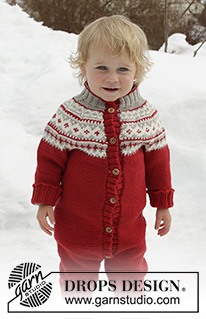











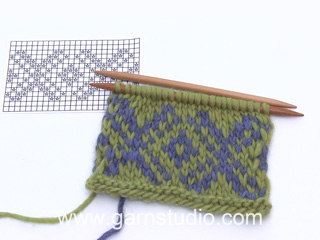
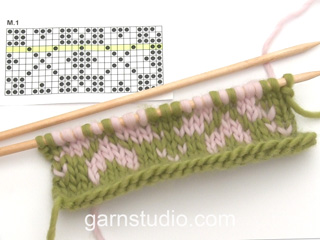
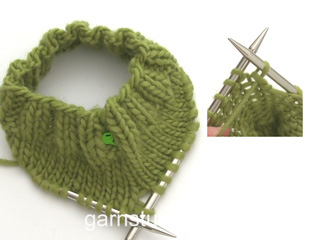
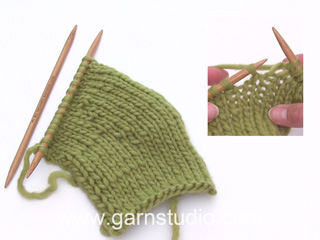
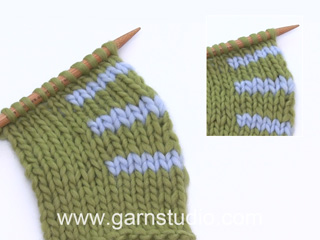
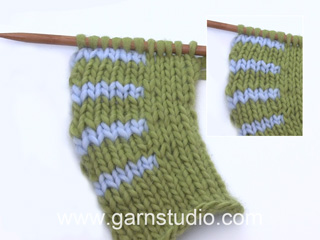
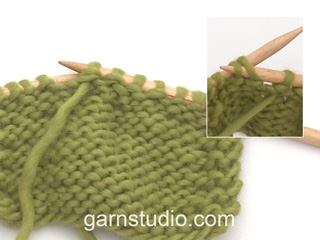


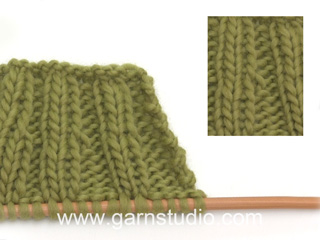



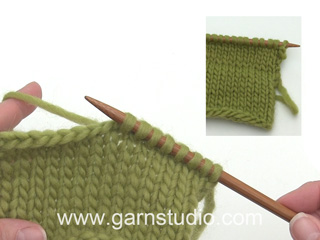
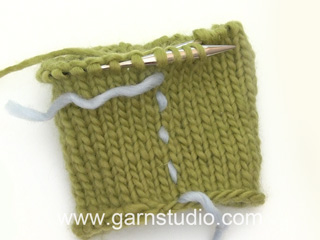

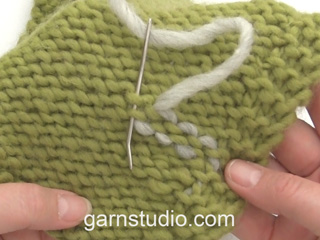
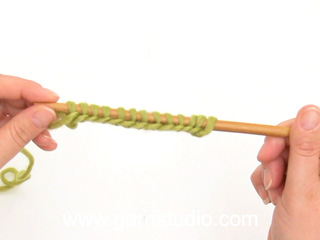
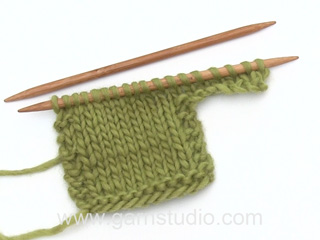

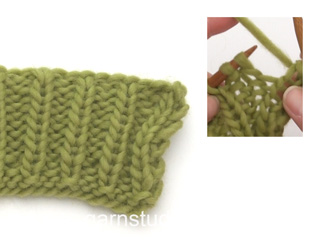
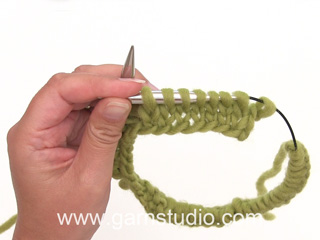
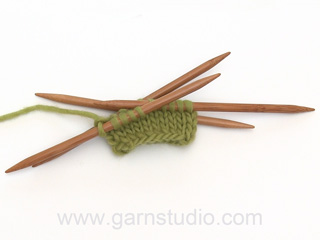
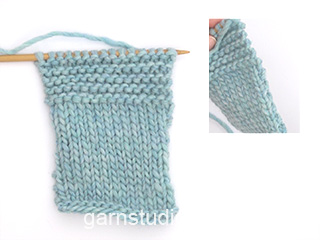
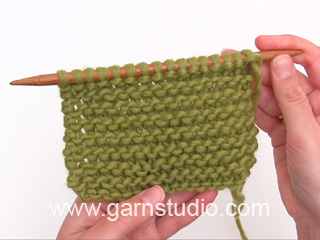
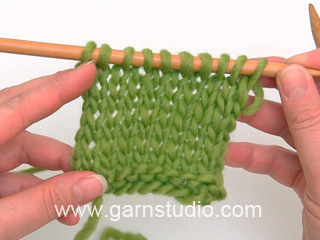





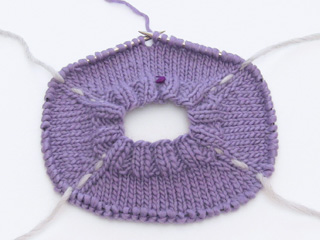



















Comments / Questions (8)
As medidas do desenho correspondem a que idade?
11.01.2024 - 13:02DROPS Design answered:
As medidas do esquema correspondem a todos os tamanhos. Algumas medidas são iguais em todos os tamanhos. Bons tricôs!
11.01.2024 - 14:55Je ne trouve pas le nombre de maille 195 que vous dites pour l’empiècement alors que j’ai fait toutes les augmentations je la tricote pour 2 ans ’je l’ai refait 2 fois toujours le même problème merci de votre aide
27.10.2023 - 11:02DROPS Design answered:
Bonjour Milah, notez que vous devez augmenter 10 mailles dans chaque A.1 pour qu'il y en ait 16 au total quand A.1 est terminé, vous aurez ainsi: 1 m lis, 12 x 16 m, 1 m et 1 m lis soit 195 mailles. Bon tricot!
28.10.2023 - 09:24Hva menes med 12 raportet a 7 masker
15.02.2020 - 12:15DROPS Design answered:
Hei Maj-Britt, Når du begynner mønster A.1 er det 7 masker i første rad på diagrammet. Disse 7 masker skal repeteres 12 ganger på omgangen (mønster A.1 repeteres 12 ganger). God fornøyelse!
15.02.2020 - 13:51Hei..kan jeg få kjøpe oppskrifter av dere i papirform??
23.11.2019 - 14:10DROPS Design answered:
Hei Åshill. Vi har sluttet med kataloger, men du kan fint skrive ut alle våre oppskrifter gratis. Trykk på Skriv ut - ikonet og velg Oppskrift og/eller bilder. God Fornøyelse!
25.11.2019 - 10:56Nu har jag påbörjat denna. Mönsterstickningen är färdig och det återstår nu bara rött garn. Men jag behövde bara ca ett halv nystan ljus beige nr 8, inte 150g (tre nystan) som det står i beskrivningen för minsta storleken. Det måste vara fel i beskrivningen, för jag har mätt och stickfastheten stämmer.
18.11.2019 - 19:08DROPS Design answered:
Hej Bianca, tack för info, det skall vi titta på :)
03.12.2019 - 15:26Jeg strikker str 2 år og har nok med 50 g i str lys beige. Stemmer garnmengden her?
08.06.2019 - 04:24Hei! Spørsmål ang.montering av stolpene.Det står: Legg høyre stolpe over venstre stolpe og sy fast til dressen der det ble lagt opp 1 maske i hver side. Etter planen blir stolpene mine ganske breie ( 3-4 cm). Redd for at det ikke blir plass for stolpene da. Må jeg legge opp flere masker da? (3-4 på hver side) På forhand takk for svar!
22.01.2019 - 09:14DROPS Design answered:
Hei Sevinj. Om du strikker stolpene lenger enn det som står i oppskriften, bør du også legge til fler masker enn det som står for at de skal bli plass. Du kan nok legge til 2-3 masker i hver side. Vær obs på at dressen kan bli 1-2 cm videre om du gjør det slik. God fornøyelse
29.01.2019 - 13:59Hei! Kiitos ihanasta ohjeesta -neulon sitä joululahjaksi siskoni pojalle. Mietin kuitenkin, onko tuon kaarrokkeen värin beigen langan menekki laskettu väärin -itselläni sitä jäi kaksi täyttä kerää. Päävärin riittävyyden kanssa taas olen huolissani, en tosin ole aivan vielä neulonut haalaria loppuun, mutta näyttää siltä että loppuu kesken.
16.12.2018 - 08:21